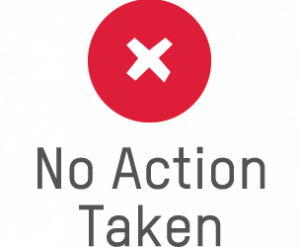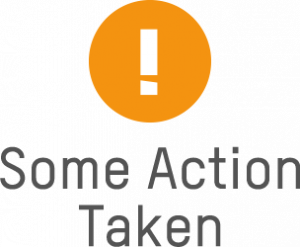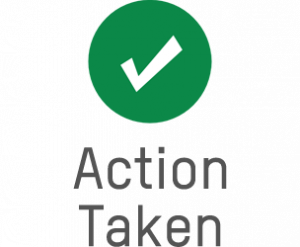Do you know where your clothes come from? Learn how 5 of your favourite companies stack up
Supply chain transparency is a growing trend in the clothing industry, in part, because consumers are demanding it. A study from the MIT Sloan School of Management found that consumers would be willing to pay 2 to 10 per cent more for products from companies that provide greater supply chain transparency, including full disclosure of where their products are coming from, under what conditions they are being made and what components and materials were used.
Work done by transparency advocates has paved the way for greater supply chain disclosure, with the level of information publicly available having increased significantly over the past decade. Twenty-five years ago, no major garment company disclosed their suppliers, having considered their supplier list to be sensitive business information, which could put them at a competitive disadvantage if disclosed. In the late 1990s and early 2000s, major apparel brands, like Nike and Adidas, began disclosing the names and addresses of their factories in response to a campaign led by United Students Against Sweatshops (USAS).
Supply chain transparency is a powerful tool to defend workers’ rights, improve ethical business practices and build trust with consumers and other stakeholders – so then why is the fashion industry keeping consumers in the dark?
Transparency is a key ingredient in implementing an ethical business model and a critical precursor to paying living wages to the women who make our clothes across the supply chain. Brands have a clear responsibility to be transparent as a first step towards identifying, mitigating, and remediating human rights and environmental risks. It enables prevention or mitigation of human rights abuse by allowing workers and worker rights-based organizations know which companies to alert about abuses at a factory, so the companies can take action to resolve the issue, and monitoring can reveal if a company is moving away from a given production site due to increases in wages or stronger labour rights legislation.
In 2016, several human and labour rights organizations together with global unions formed a coalition to improve supply chain transparency in the fashion industry. They created the Transparency Pledge as a common minimum standard for supply chain disclosure and as a tool to influence brands to disclose. Several companies have aligned with the Pledge4 and disclose their suppliers. Some companies have gone further and begun to disclose their fabric, accessories, and raw material suppliers – moving further down the supply chain and leading the way amongst their industry peers.
It is exciting that transparency is becoming a common trend within many European and US companies – it’s time for more Canadian companies to follow suit and keep up with global trends, international standards, and consumer demand.
Oxfam Canada’s What She Makes campaign is asking companies to be transparent to enable consumers, human and labour rights organizations, investors, and regulators to monitor where a company sources from.
With so many global brands having embraced supply chain transparency, Oxfam Canada has scored five leading Canadian fashion companies on their commitment to being transparent in our What She Makes brand tracker.
Using our brand tracker, you can take to social media and tell companies that you want to know where their products are made so workers’ rights are respected, and poverty is not sewn into the clothes that you wear!
 Artizia reports publicly on their website the countries from which they source both finished goods and fabrics. However, Aritzia does not disclose factory names, locations or addresses. There is also no public information on the types of products being sourced from each factory, nor the number of workers or gender breakdown of the workforce by factory. Aritzia reports that they conduct onboarding assessments for each new factory, which includes a review of employment practices, labour rights protections, working hours, wages, freedom of association and health and safety – among other areas. They also have third-party audits on supplier performance based on their supplier code of conduct. They usually announce when their audits will take place as they believe it builds relationships based on transparency and trust. However, if needed, they can conduct unannounced audits of their suppliers.
Artizia reports publicly on their website the countries from which they source both finished goods and fabrics. However, Aritzia does not disclose factory names, locations or addresses. There is also no public information on the types of products being sourced from each factory, nor the number of workers or gender breakdown of the workforce by factory. Aritzia reports that they conduct onboarding assessments for each new factory, which includes a review of employment practices, labour rights protections, working hours, wages, freedom of association and health and safety – among other areas. They also have third-party audits on supplier performance based on their supplier code of conduct. They usually announce when their audits will take place as they believe it builds relationships based on transparency and trust. However, if needed, they can conduct unannounced audits of their suppliers.
 Herschel does not disclose the names, locations or addresses of their supplier factories, nor any other essential details required for supply chain transparency. However, Herschel claims to be committed to respecting human rights and have a high level of transparency from their factories and suppliers. They report that they conduct annual social compliance audit and regular site visits of factories in its supply chain to verify compliance with Herschel’s supplier code of conduct and other requirements. Their sustainability reporting appears to be driven largely by legal requirements to do so under California’s Supply Chain Transparency Act and the UK Modern Slavery Act.
Herschel does not disclose the names, locations or addresses of their supplier factories, nor any other essential details required for supply chain transparency. However, Herschel claims to be committed to respecting human rights and have a high level of transparency from their factories and suppliers. They report that they conduct annual social compliance audit and regular site visits of factories in its supply chain to verify compliance with Herschel’s supplier code of conduct and other requirements. Their sustainability reporting appears to be driven largely by legal requirements to do so under California’s Supply Chain Transparency Act and the UK Modern Slavery Act.

Loblaw has taken significant steps to improve safety and transparency within their supply chain, specifically related to Joe Fresh’s apparel manufacturing and materials procurement. Joe Fresh sources primarily from Bangladesh, Cambodia, China, India, Indonesia, Pakistan, South Korea and Thailand. They also disclose the list of factories that they source their products from. This is an essential step towards supply chain transparency. However, we encourage them to disclose publicly the types of products made, number of workers, breakdown by gender in each factory and the sourcing channel.
 According to their most recently updated supplier list, lululemon works with approximately 90 suppliers, 18 finished goods subcontractors and 19 raw material suppliers. According to their recently updated factory list, they source primarily from Vietnam, Cambodia, Sri Lanka, China and Taiwan. They require all their manufacturers to adhere to their vendor code of ethics. Their product quality and sustainability team partners with leading inspection and verification firms to closely monitor each supplier’s compliance with applicable laws and lululemon’s vendor code of ethics. lululemon has done excellent work disclosing their supply chain by providing factory names, locations, addresses and types of products made, number of workers and the breakdown of workers by gender in each factory. Their list includes active facilities, subcontractors and their top raw material suppliers.
According to their most recently updated supplier list, lululemon works with approximately 90 suppliers, 18 finished goods subcontractors and 19 raw material suppliers. According to their recently updated factory list, they source primarily from Vietnam, Cambodia, Sri Lanka, China and Taiwan. They require all their manufacturers to adhere to their vendor code of ethics. Their product quality and sustainability team partners with leading inspection and verification firms to closely monitor each supplier’s compliance with applicable laws and lululemon’s vendor code of ethics. lululemon has done excellent work disclosing their supply chain by providing factory names, locations, addresses and types of products made, number of workers and the breakdown of workers by gender in each factory. Their list includes active facilities, subcontractors and their top raw material suppliers.
 Roots’ investor disclosures (Annual Information Form 2022, SEDAR filings) state that most of their apparel products are sourced outside of North America. They source fabrics and other materials and selected finished merchandise from third-party suppliers, and work with third-party manufacturers to produce most of their apparel products. Roots does not disclose their list of factories or other information required for supply chain transparency. Suppliers and manufacturers are subject to their supplier code of conduct and manufacturing standards. They also conduct third-party social audits for compliance with local laws and global standards. However, their code of conduct is not publicly available, nor are any details on what labour standards are evaluated in the auditing process.
Roots’ investor disclosures (Annual Information Form 2022, SEDAR filings) state that most of their apparel products are sourced outside of North America. They source fabrics and other materials and selected finished merchandise from third-party suppliers, and work with third-party manufacturers to produce most of their apparel products. Roots does not disclose their list of factories or other information required for supply chain transparency. Suppliers and manufacturers are subject to their supplier code of conduct and manufacturing standards. They also conduct third-party social audits for compliance with local laws and global standards. However, their code of conduct is not publicly available, nor are any details on what labour standards are evaluated in the auditing process.

